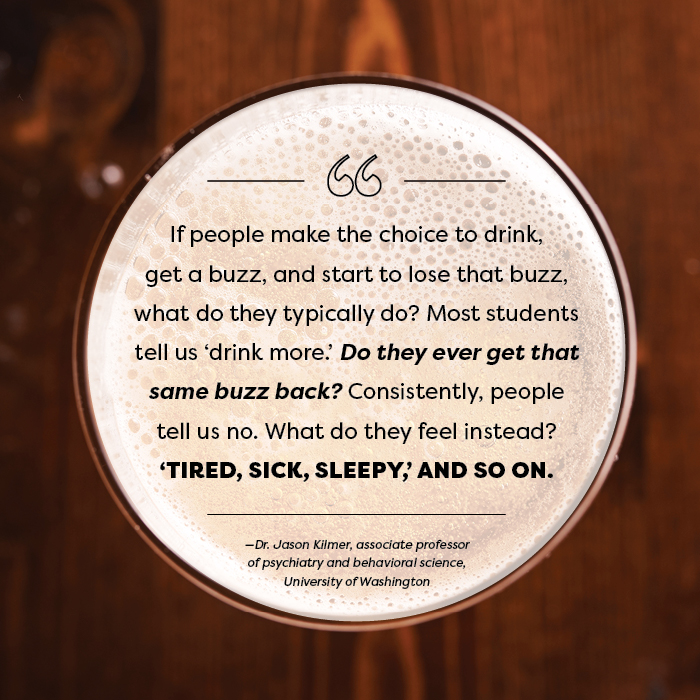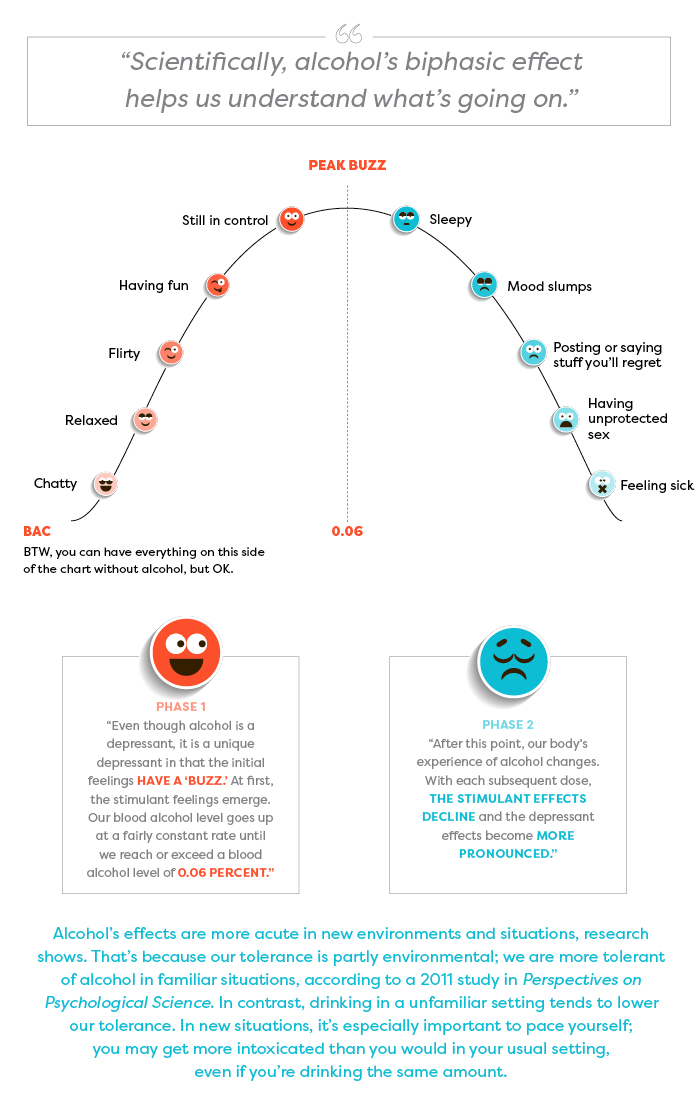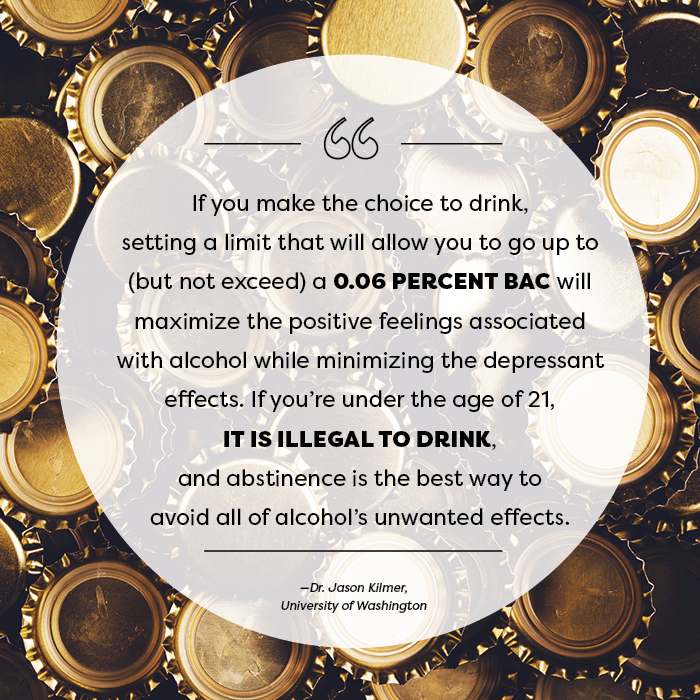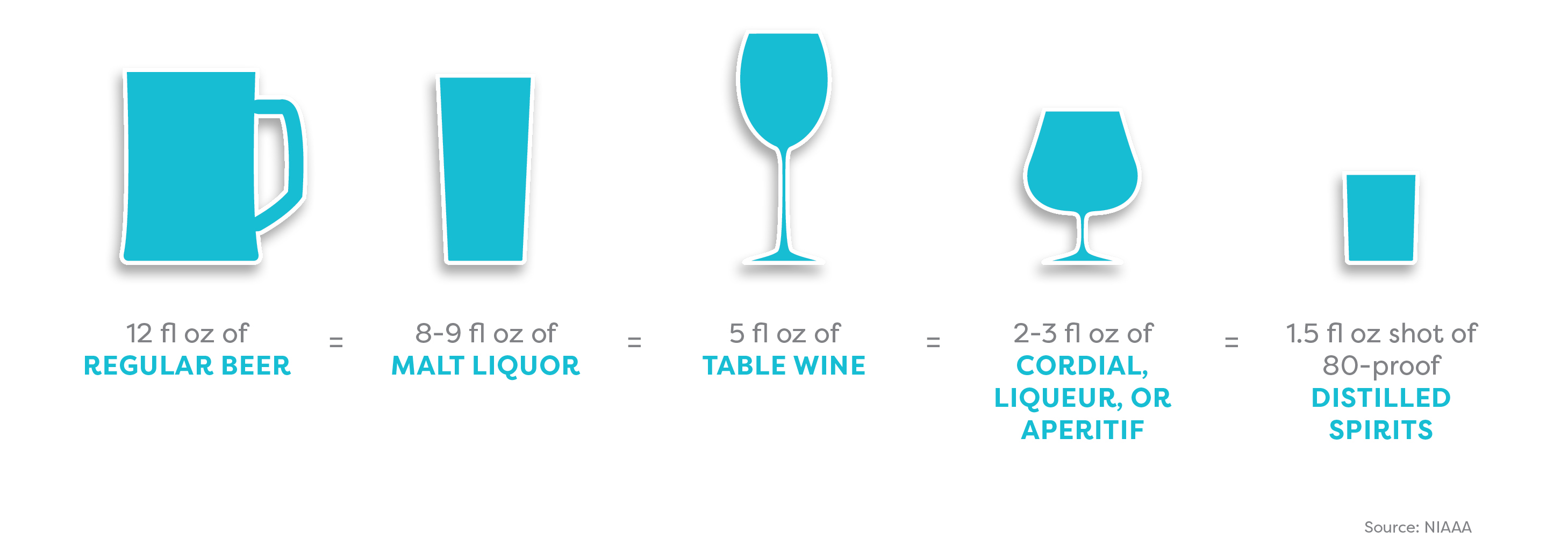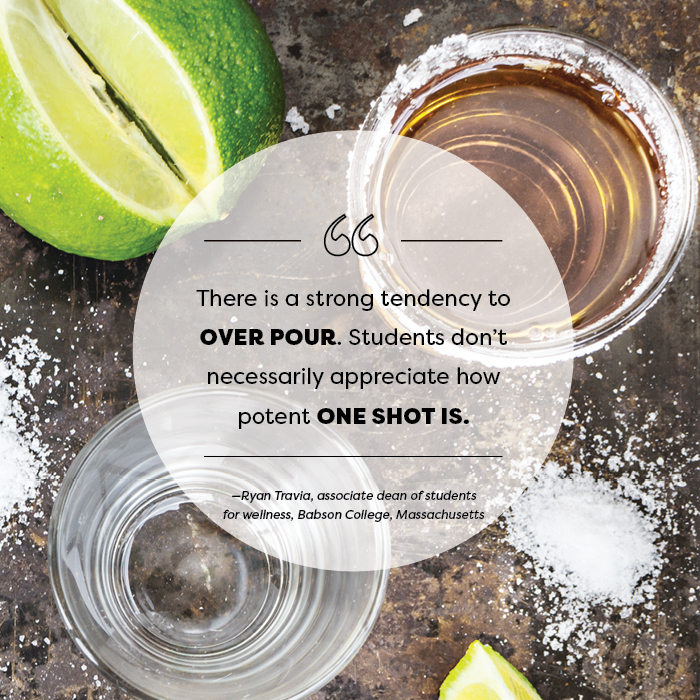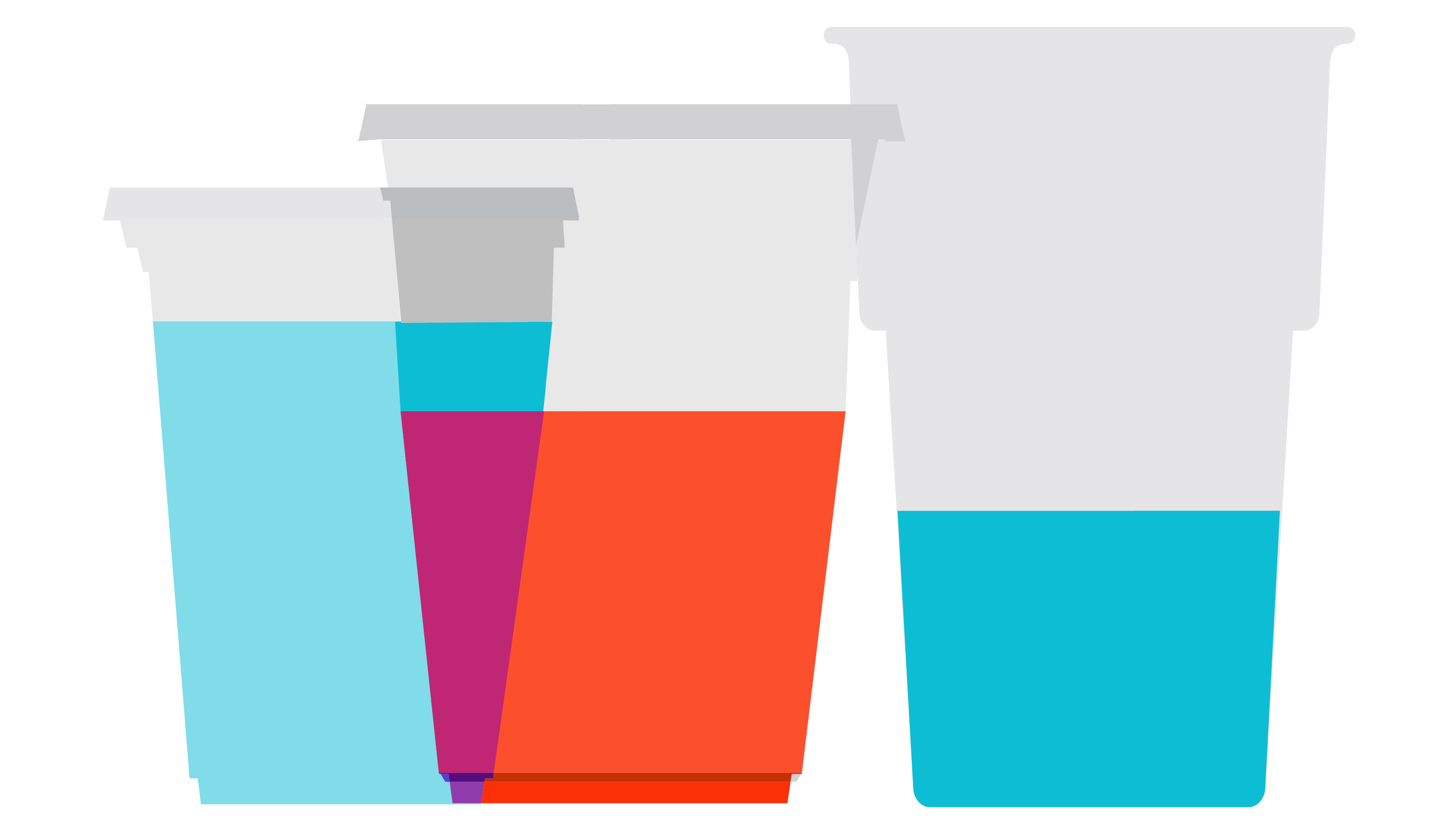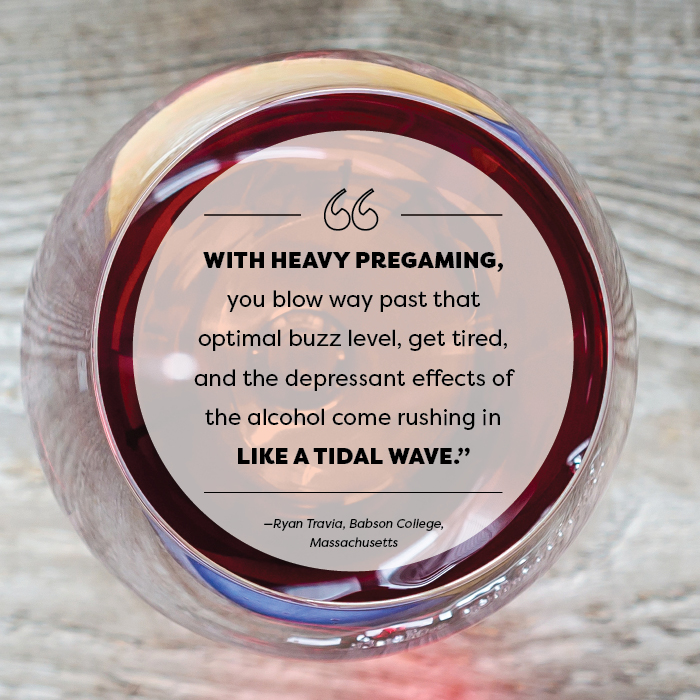Drinking? 7 ways to get what you want from it
Having the drink without the downside
Do you choose to drink alcohol? If so, chances are you’re interested in figuring out how to get alcohol’s buzz (feeling chatty, relaxed, and socially connected) while avoiding its negative effects (feeling tired, sick, embarrassed, and all set to fail Monday’s test).
You may have noticed that once you’ve passed the euphoric stage of drinking, and started to slump, consuming more alcohol does not bring back the buzz. This is always the case (science has figured out why, but that’s another story).
This guide is about how to get the effects of alcohol that you want without ending up with its baggage too. A key skill is knowing how to take care of yourself while still being part of the party. Here, we outline seven realistic ways to do this.
Note: Our emphasis is on realistic. Most of you are using some of these strategies already, a large national survey shows. To find out how to make this easier, while expanding your options for having fun and staying in control, keep reading. These strategies are especially important when you’re new to college, new to drinking, or both. (The minimum legal age for consuming alcohol in the US is 21.)
First things first: Be confident in your choice to drink mindfully
Alcohol seems (and is) part of the social culture on many campuses. But over and over, studies show that students perceive alcohol use among their peers to be far more common and frequent than it really is. Here’s what undergrads think their peers are drinking, compared to how much undergrads report they are actually drinking:
Here’s what undergrads think their peers are drinking, compared to how much undergrads report they are actually drinking: Source: National College Health Assessment, Fall 2015; 19,800 respondents, anonymous and randomized
Source: National College Health Assessment, Fall 2015; 19,800 respondents, anonymous and randomized
7 ways to get what you want from alcohol:
1 Make a plan in advance
Planning what you’ll drink through the evening is key to staying in control.  Consider:
Consider:
- What you will drink
- How many alcoholic drinks you will have
- How you will pace those drinks through the event
- Whether or not you will have access to the drink of your choice
To figure out what works for you, see Know what you can drink—at what pace later in this slideshow.
Part of planning is anticipating whether you will have control over your own alcohol choices. For example, if jungle juice or mystery punch is all that’s available, the healthiest choice is not to drink or to bring your own.
2 Set your limits up front
Let your friends know that you’re looking forward to hanging out with them and that you’re choosing to not overdo it. Can’t afford a late penalty for your assignment or a missed team practice? Your friends will get it.
3 Tag team with a friend
You’re not the only one who wants to be in control when you go out. Tag team with a friend, help each other out, and celebrate the people who step in and let you know when you’ve had enough.

4 Alternate alcoholic and nonalcoholic drinks
We feel more comfortable when we have a cup in our hand, whether or not that cup contains alcohol, studies show.
- If you usually have eight alcoholic drinks and you want to cut that to four, you can still have eight drinks: alternate alcoholic and nonalcoholic beverages.
- No one has to know what is in your cup or can: Refilling your beer can with water or juice keeps others from worrying that you haven’t had enough to drink or aren’t having fun.
- Bonus: Add ice to your drinks—studies show you’ll drink more slowly (and the alcohol will be diluted).
- Caution: Carbonated drinks may be best avoided when you’re drinking alcohol; carbonation appears to speed up the rate at which alcohol is absorbed into the blood stream, according to researchers. Instead, go for water (add fruit for flavoring), juice, or a sports drink.
Good to know: Studies of the placebo effects related to alcohol show that the chatty, witty persona we associate with drinking is more about our expectations of alcohol than the alcohol itself. In other words, we can be that person without alcohol.
5 Delay the next drink
You can delay your next drink without seeming to reject the person who’s offering it or distancing yourself from the social scene.
When someone offers to get you a drink, show appreciation, and give them a reason to hold off.
Bonus: This sets you up to get your own drink directly from the bartender—the safest source of alcohol. Here’s why:
- You’ll know what you’re getting. This is very different from jungle juice or mystery punch, when you have no way of knowing how concentrated the alcohol is. (If you expect punch to be the only alcohol served at a party, bring your own drinks.)
- You’ll more easily stick to your plan. Bartenders know what a standard serving size looks like—and can also recognize a person who shouldn’t drink any more.
- You’ll reduce the risk of your drink being spiked. “Date-rape drugs” are tasteless, odorless, colorless, and rapidly dissolving.
6 Show that you’re having a good time
The person offering you a drink wants you to have a good time and include you in the fun. Let them see that you’re enjoying yourself.

7 Be thoughtful about drinking games
Drinking games vary in their safety and risk. If you participate, choose wisely.
Be cautious about matching your alcohol intake with someone else’s. When participating in drinking games, we often consume more than we had anticipated, and we drink more quickly than usual. This hikes up the risk of illness, impairment, and regret. Consider adapting drinking games in these ways:
Consider adapting drinking games in these ways:
- Take a sip, not a shot
- Play all or some rounds with nonalcoholic beverages
- Take breaks
Know what you can drink—at what pace
Those strategies are helpful in social and professional situations involving alcohol. Being mindful about your alcohol use also means knowing what you typically drink and how your body and mind respond to it. Here’s how to figure that out:
A Ask yourself three questions:
- What do I drink? The amount of alcohol you consume depends partly on what you’re drinking. Alcoholic beverages vary enormously in their alcohol content.
- What’s my usual serving size? The amount of alcohol you consume also depends on the shape and size of your glass or cup. A standard serving size is unlikely to be whatever your friend just ladled into that red solo cup.
- How long will I be out for? Think about pacing your drinking. If you’ll be out for four hours and you plan to have three alcoholic drinks, you may decide to have one alcoholic drink per hour for the first three hours. Pregaming—drinking before you go out—means you hit “peak buzz” earlier, and your mood declines earlier too.
How to calculate your alcohol intake (Rethinking Drinking: NIAAA)
B Consult a BAC calculator or chart:
This helps you estimate the amount of drink servings you can consume, and how you should pace them, before your Blood Alcohol Content (BAC) reaches “peak buzz”. For many people, “peak buzz” is around 0.06 percent BAC. For some, it’s between 0.04 and 0.06.
Predict how you’ll feel through the evening (Yale University)
Estimate your BAC during dinner (Éduc’alcool)
Are you already doing this when you drink?
Almost all college students (98 percent) who responded to a national survey reported that they routinely took one or more smart measures when socializing with alcohol in the past 12 months.
| “Most of the time” or “always” | |
| Alternate non-alcoholic with alcoholic beverages | 35 percent |
| Avoid drinking games | 37 percent |
| Choose not to drink alcohol | 26 percent |
| Decide in advance not to exceed a set number of drinks | 43 percent |
| Eat before and/or during drinking | 80 percent |
| Have a friend let you know when you have had enough | 44 percent |
| Keep track of how many drinks being consumed | 68 percent |
| Pace drinks to one or fewer an hour | 34 percent |
| Stay with the same friends the entire time drinking | 88 percent |
| Stick with only one kind of alcohol when drinking | 52 percent |
| Use a designated driver | 89 percent |
Source: National College Health Assessment, Fall 2015; 19,800 respondents, anonymous and randomized
Effective tools and tips for having fun and staying in control
Rethinking Drinking: National Institute on Alcohol Abuse and Alcoholism (NIAAA)
Handle your urge to drink and friends who offer: NIAAA
Facts, tips, and tools for young adults: Éduc’alcool
Calculators for alcohol content, calories, cost, etc.: NIAAA
Guides to the social dynamics around drinking alcohol: BestCollegeReviews.org
Jason Kilmer, PhD, associate professor of psychiatry and behavioral science, University of Washington; assistant director of health and wellness for alcohol and other drug education, Division of Student Life, University of Washington.
Joan Masters, MEd, senior coordinator, Partners in Prevention, University of Missouri Wellness Resource Center; area consultant, The BACCHUS Network.
Ann Quinn-Zobeck, PhD, former senior director of initiatives and training, The BACCHUS Network.
Ryan Travia, MEd, associate dean of students for wellness, Babson College, Massachusetts; founding director, Office of Alcohol & Other Drug Services (AODS), Harvard University.
American College Health Association. American College Health
Association–National College Health Assessment II: Reference Group
Undergraduates Executive Summary Fall 2015. Hanover, MD: American
College Health Association; 2016.
Borsari, B., & Carey, K. B. (2001). Peer influences on college drinking: A review of the research. Journal of Substance Abuse, 13, 391–424. Retrieved from https://citeseerx.ist.psu.edu/viewdoc/download?doi=10.1.1.602.7429&rep=rep1&type=pdf
Borsari, B., & Carey, K. B. (2006). How the quality of peer relationships influences students’ alcohol use. Drug and Alcohol Review, 25(4), 361–370.
Crawford, L. A., & Novak, K. B. (2007). Resisting peer pressure: Characteristics associated with other-self discrepancies in college students’ levels of alcohol consumption. Journal of Alcohol and Drug Education, 51(1), 35–62.
Harrington, N. G. (1997). Strategies used by college students to persuade peers to drink. Southern Communication Journal, 62(3), 229–242. Retrieved from https://www.tandfonline.com/doi/abs/10.1080/10417949709373057?journalCode=rsjc20
Kilmer, J., Cronce, J. M., & Logan, D. E. (2014). “Seems I’m not alone at being alone:” Contributing factors and interventions for drinking games in the college setting. The American Journal of Drug and Alcohol Abuse, 40(5), 411–414.
Neighbors, C., Lee, C. M., Lewis, M. A., Fossos, N., et al. (2007). Are social norms the best predictor of outcomes among heavy-drinking college students? Journal of Studies on Alcohol and Drugs, 68(4), 556–565.
Neighbors, C., Jensen, M., Tidwell, J., Walter, T., et al. (2011). Social-norms interventions for light and nondrinking students. Group Processes & Intergroup Relations, 14(5), 651-669. doi: 10.1177/1368430210398014
Palmeri, J. M. (2016). Peer pressure and alcohol use among college students. Applied Psychology Opus, NYU Steinhardt. Retrieved from
https://steinhardt.nyu.edu/appsych/opus/issues/2011/fall/peer
Perkins, H. W., Linkenbach, J. W., Lewis, M. A., & Neighbors, C. (2010). Effectiveness of social norms media marketing in reducing drinking and driving: A statewide campaign. Addictive Behaviors, 35(10), 866–874.
Roberts, C., & Robinson, S. P. (2007). Alcohol concentration and carbonation of drinks: The effect on blood alcohol levels. Journal of Forensic and Legal Medicine, 14(7), 398–405.
Rohsenow, D.J., & Marlatt, G. A. (1981). The balanced placebo design: Methodological considerations. Addictive Behaviors, 6(2), 107–122. https://dx.doi.org/10.1016/0306-4603(81)90003-4
Student Health 101 survey, July 2016.
Turner, J., Perkins, H. W., & Bauerle, J. (2008). Declining negative consequences related to alcohol misuse among students exposed to social norms marketing intervention on a college campus. Journal of American College Health, 57, 85−93.
Wechsler, H., Nelson, T. E., Lee, J. E., Seibring, M., et al. (2003). Perception and reality: A national evaluation of social norms marketing interventions to reduce college students’ heavy alcohol use. Journal of Studies on Alcohol, 64, 484–494.




